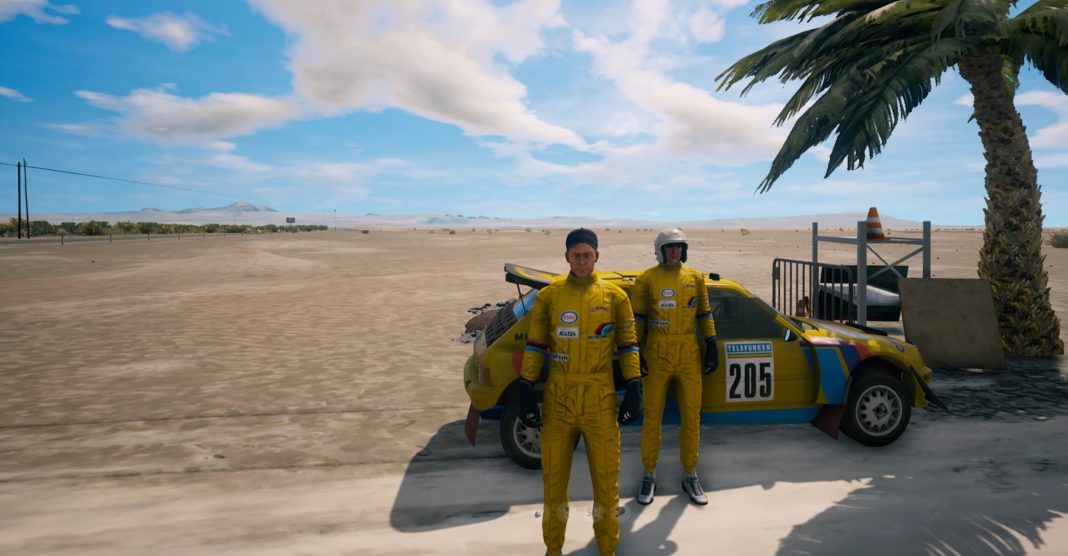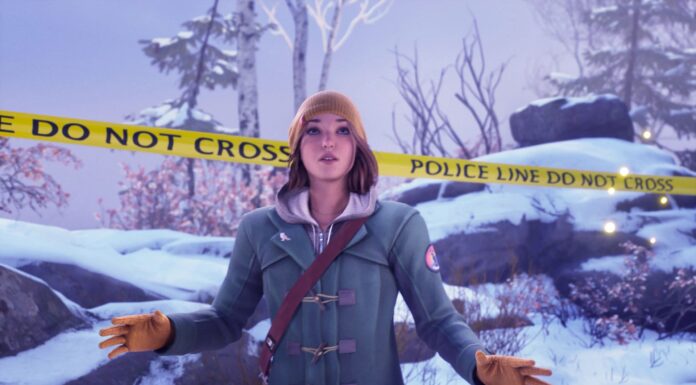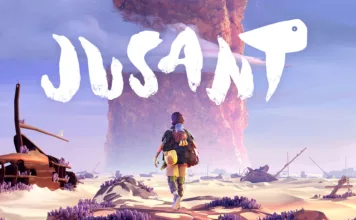Like a lot of motorsports, the Dakar Rally is a niche event in most parts of the world. Western Europe, Russia and its 10-year home in South America are where raid-style rally is most popular but it’s nowhere near as popular as stage rallying or rallycross, even in these regions. Dakar 18 doesn’t try to draw in an audience outside of rally in general, eschewing the casuals and the arcade racing aficionados for those who won’t complain about being lost or constantly moving between horrendous over and understeer. DAKAR 18 is for players who get that it’s all part of the experience.
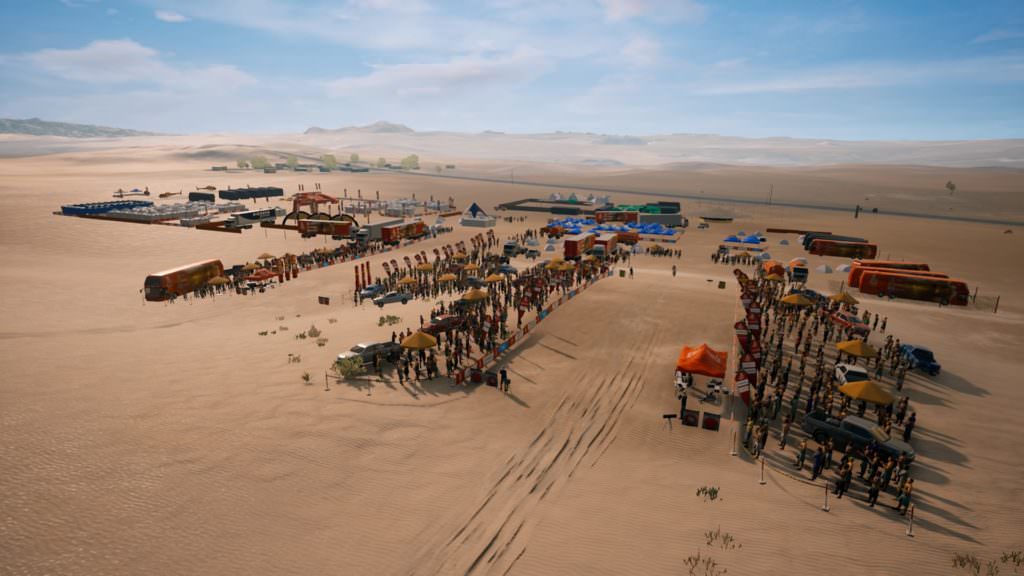
Vehicle models are Far from the petrol-porn of Forza Motorsport, GT Sport or Project Cars 2 but still 8th-gen and fit for purpose
Briefest Premise
‘Dakar’ is in its 40th year and while the race finds itself on a different continent for the last decade, the goal remains the same. A 9,000+km trek along road, mud, rock, desert or whatever you happen to come across. Drivers/riders across four categories (five classes) are given some gates they need to pass through. Fastest time minus penalties for missed optional gates wins. How the entrants even manage to finish is the interesting part – the navigator has a fairly rudimentary guide or Road Book and that’s about it.
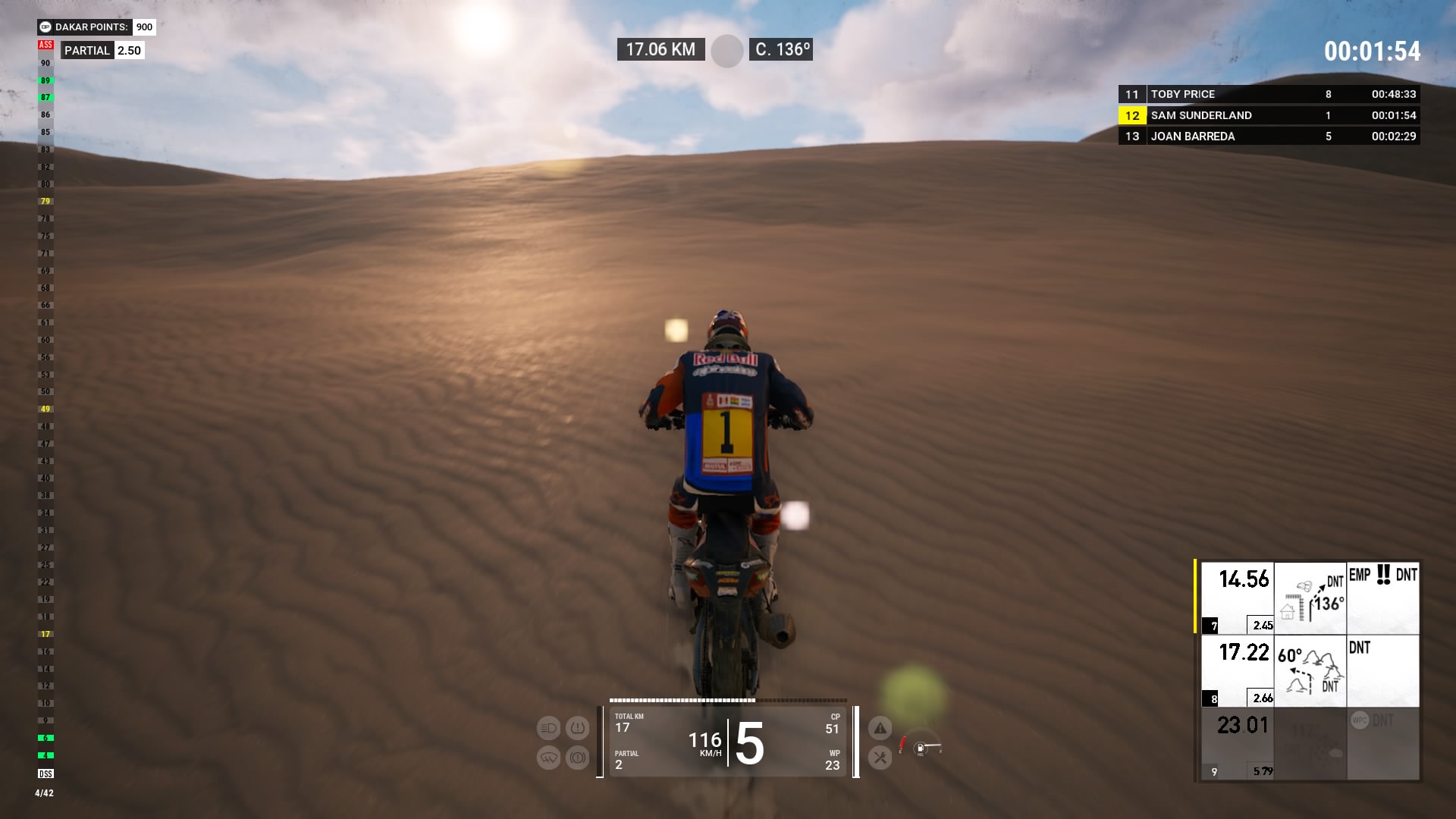
I urge players to forego ‘Rookie’ – relying on a marker to find waypoints off-road removes one of the best parts of the game
DAKAR 18 succeeds in capturing the balance of observation, improvisation and speed. The game makes a player work to find out how well they have done this – that labour is mostly worth it for the patient, the talented or the endurance-rally crazed. While not a strict simulation, DAKAR 18 features many of the event’s trials and eventualities – getting hopelessly stuck, lost or wrecked will happen but it’s all streamlined for a better play experience.
Losing Yourself
Players begin with a tutorial race. The brief run is not a great intro the game itself – the apparently twitchy steering is jarring and the stage doesn’t show off the engine. It is however very helpful in learning DAKAR 18‘s punishing-but-fair navigation and damage system.
I urge players to forego ‘Rookie’ – relying on a marker to find waypoints off-road removes one of the best parts of the game. There is something beyond the normal sense of reward the first time a player finishes even the first race with zero aid.
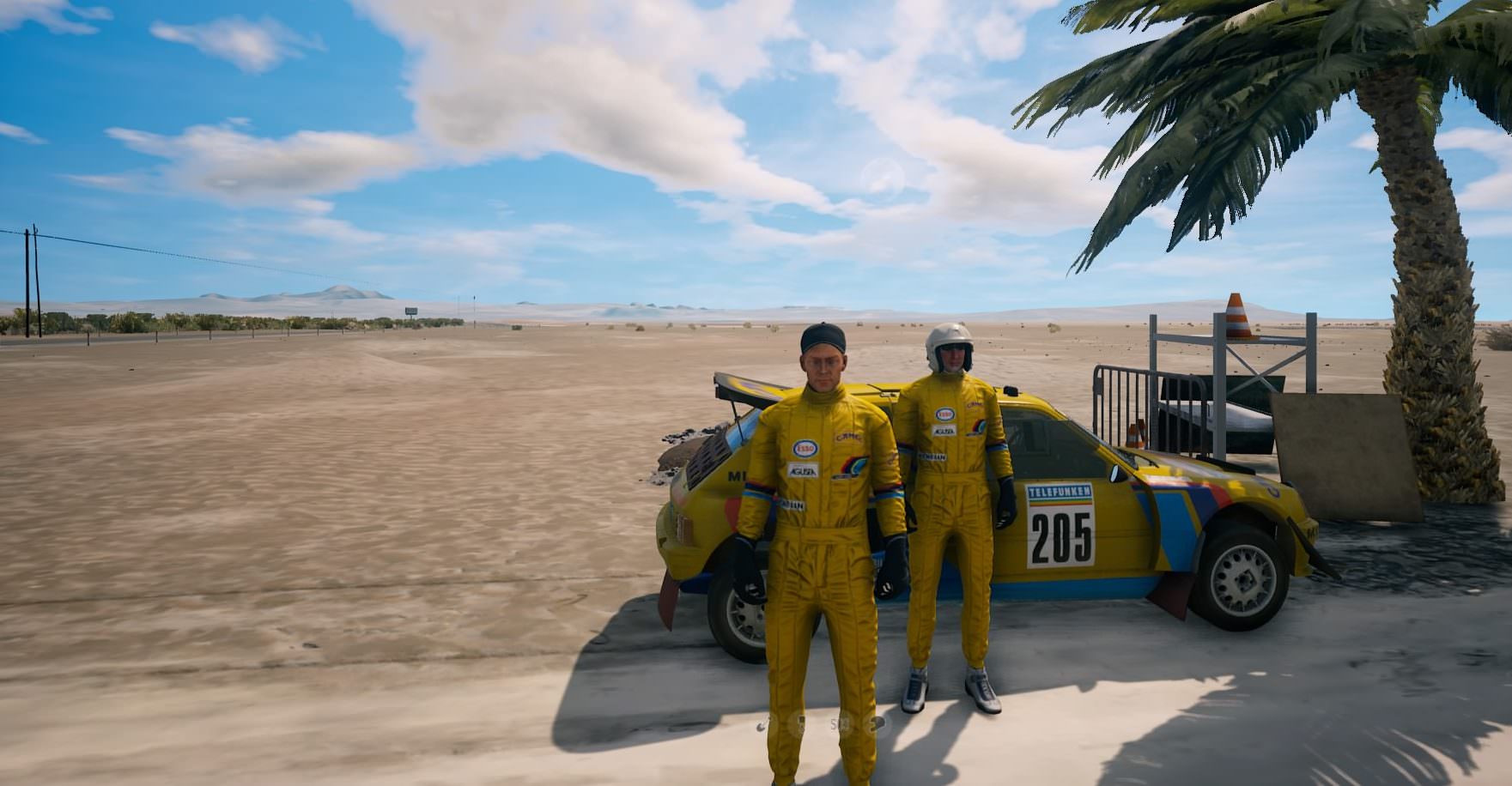
The vast deserts and rolling dunes seem almost copypasta’d at first but as a player learns the Road Book system and follows the notes, they learn that everything is in its place
Being lost and tracking back to a known spot is not uncommon in the sport proper and the game punishes you for avoiding this – the penalty for auto-returning to the last waypoint instead of using your own spatial awareness is very steep. The devs clearly wanted serious players to feel tested and honestly, the longer I played the game the fairer it felt.
However, DAKAR 18 can sometimes be sluggish to move between one note and the next. Your navigator will sometimes read the next note even when you are slightly lost. These deficiencies might be defensible as ‘realistic’ but it’s an example of the lack of polish that permeates the experience.
Losing Your Self
DAKAR 18 has a noticeable sparseness to its map. The vast deserts and rolling dunes seem almost copypasta’d at first but as a player learns the Road Book system and follows the notes, they learn that everything is in its place. ‘Some’ rocks become ‘those’ rocks; the notes give meaning to the meaningless.
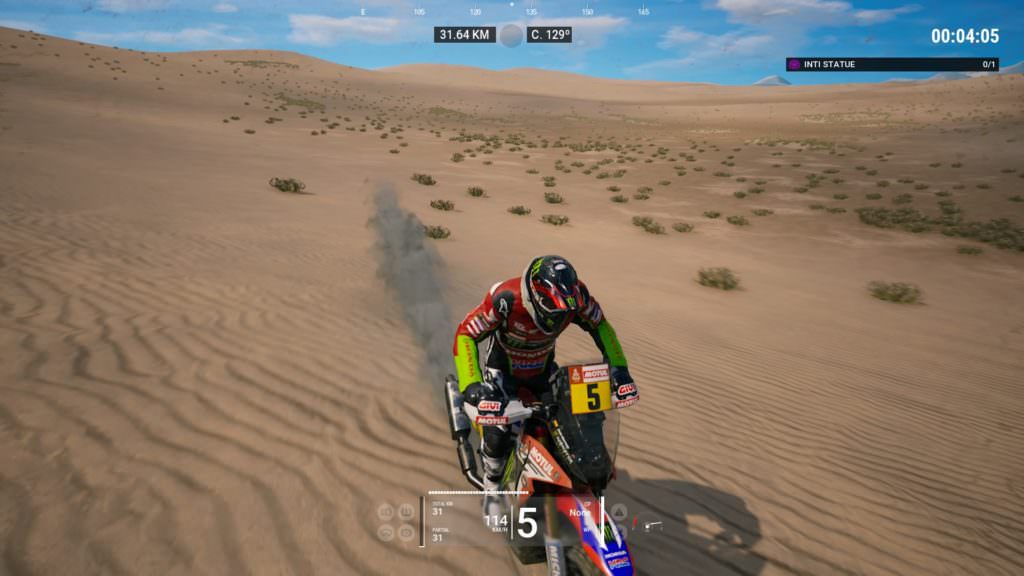
The game sometimes struggles to make up its mind as to what exactly the player is driving on but its mostly commendable in conveying different driving conditions
Because a player will have to keep an eye or ear out at all times for such particular and relatively minute detail, even a straight road or mud-flat still captures the attention. The fact that rectifying mistakes demands even more focus than getting it right first-time makes the DAKAR 18 experience even more involving.
There is an element of automation involved when you truly learn the symbols and the co-pilot is just confirming what you already know. The hour-or-so long stages that once seemed long melt seem to contract the better a player gets at the game.
Oh, It’s Actually My Fault
As mentioned, the tutorial gives a poor impression of the handling model of DAKAR 18. It’s easy to oversteer and the light builds are happy to donut or spin-out. Even when we eventually hit roads, players are discouraged from fully hitting the accelerator and turning to extremes – DAKAR 18 rewards players for moderation. Gentle turns, allowing the car to decelerate in-gear and massaging the gas are musts at all times but some surfaces are more punishing than others.
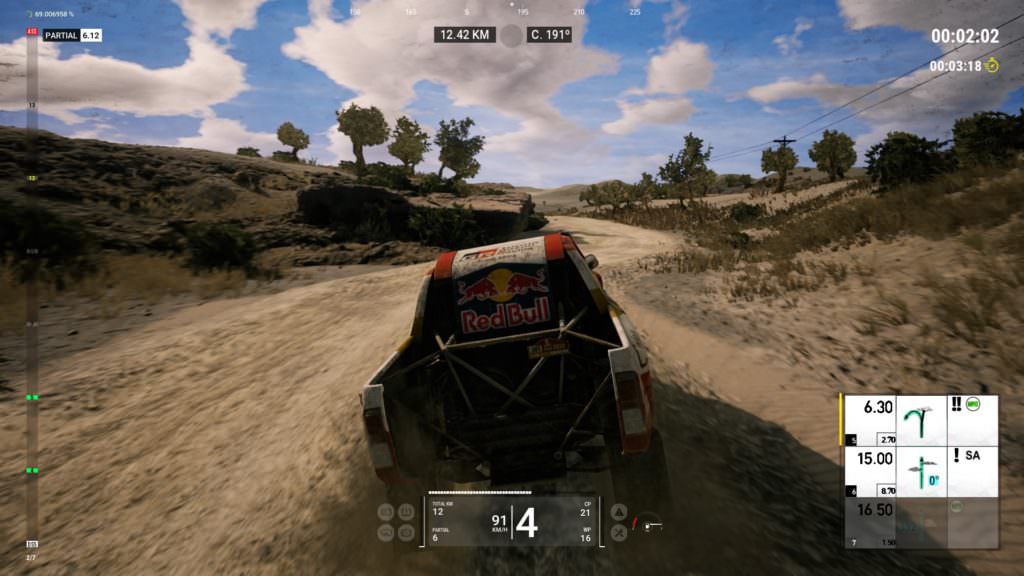
Somewhat echoing the damage seen when living things meet the shockwave of an explosion – your vehicle will look perfectly fine save for a scratch and a trickle of blood from its mouth but your 31-year-old Peugeot has about 30 metres left in him – and it doesn’t look right
What’s more challenging is how frequently the surface and the appropriate response changes. The game sometimes struggles to make up its mind as to what exactly the player is driving on but its mostly commendable in conveying different driving conditions.
Vehicular Spread
There are quite a few cars, trucks, bikes, buggies and quads with which to tear around eastern South America. 21 in total covers most of the vehicles of the real race but the 45 entrants is but a fraction of the real-life roster. That being said; the serious competitors are here and all categories are populated enough to foster competition.
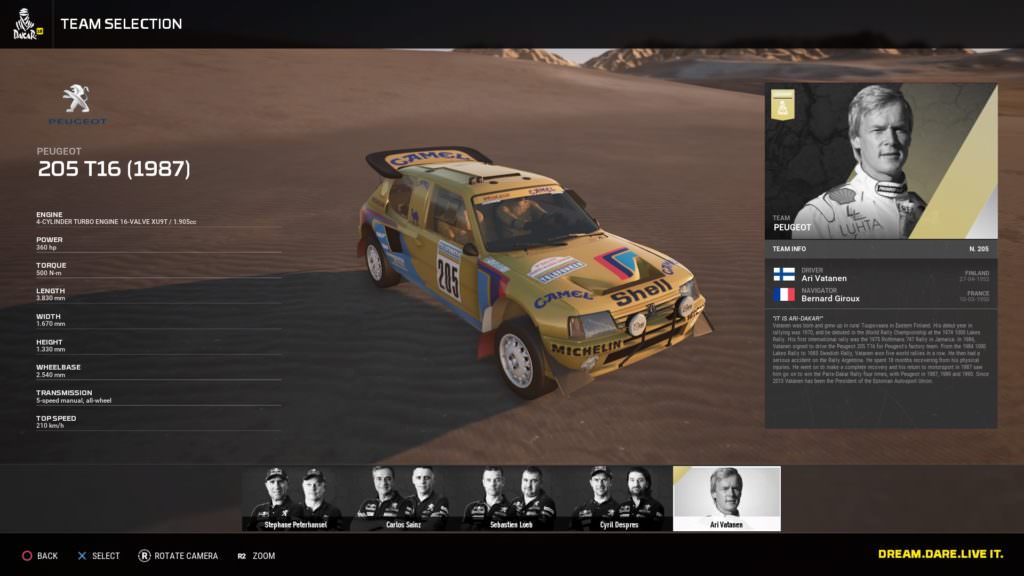
Calling DAKAR 18 a Driving game is like calling Mario a jumping game – driving is just a means to get somewhere; observing and processing the environment to reach a goal is where the actual fun lies. Any idiot can follow a track.
The models are adequate. Far from the petrol-porn of Forza Motorsport, GT Sport or Project Cars 2 but still 8th-gen and fit for purpose. Little details like fabrics or loose items swaying or flailing in the wind or floating in a jump aid the visual immersion.
Damage modelling is less well-executed visually than mechanically – while a hard landing will rightfully degrade or destroy your vehicle’s ability to function, it won’t ever look like it on the outside. Somewhat echoing the damage seen when living things meet the shockwave of an explosion – your vehicle will look perfectly fine save for a scratch and a trickle of blood from its mouth but your 31-year-old Peugeot has about 30 metres left in him – and it doesn’t look right.
Sometimes the vehicles get stuck on nothing – the hitboxes for the bikes, in particular, are imperfect enough to be hazardous when moving around fences, barriers, rocks and the occasional building.
“They Don’t Love You Like I Love You”
A player will need to be into the navigational style and harsh, semi-barren map of Dakar 18 to enjoy the game.
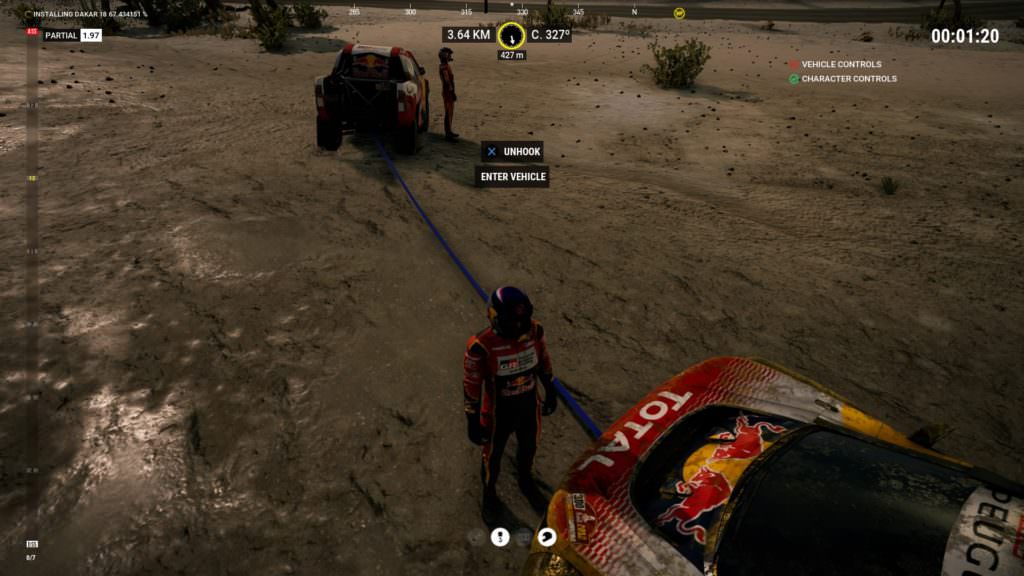
Calling DAKAR 18 a driving game is like calling Mario a jumping game – driving is just a means to get somewhere; observing and processing the environment to reach a goal is where the actual fun lies. Any idiot can follow a track.
For many reviewers, DAKAR 18 lacks aesthetic variety but I feel that the attempt at realism and attention to wayfaring over style suits the ultimate aims of the game. I won’t criticise the game for being based on an event set largely in parched dunes and dry lakes.
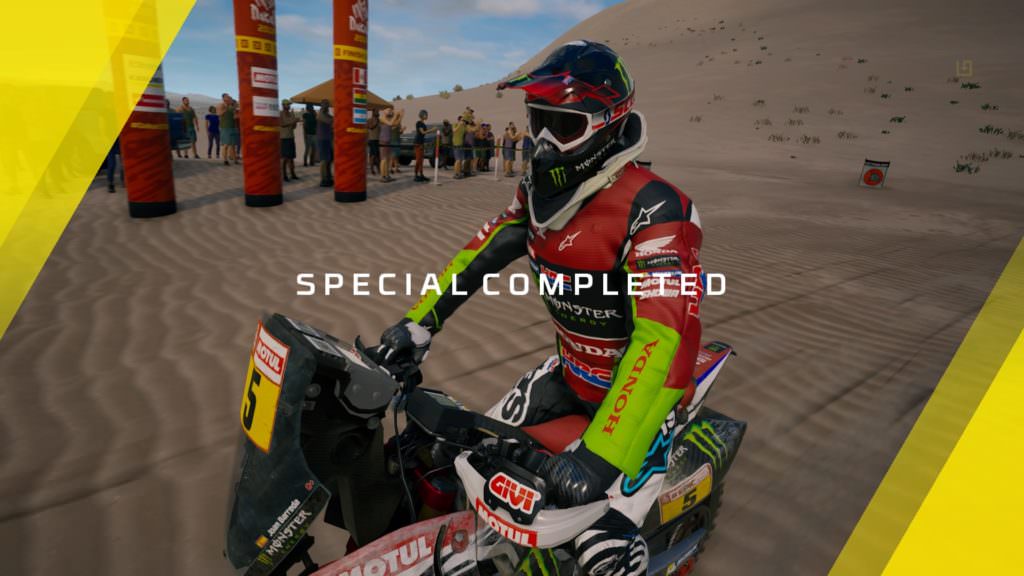
The experience is slightly rough and given a little polish, it may well have been as perfect as a Dakar game could be. As it stands, DAKAR 18 is a thoroughly decent stab at an underserviced sport that offers an uncompromising challenge for those seek it.
Formats: PlayStation 4 (Reviewed on Pro), Xbox One, Steam
Price: £49.99/€59.99/$49.99
Publisher: Deep Silver
Developer: Bigmoon
Release Date: 28th September 2018
Age Rating: PEGI 3+
Review code provided by publisher
